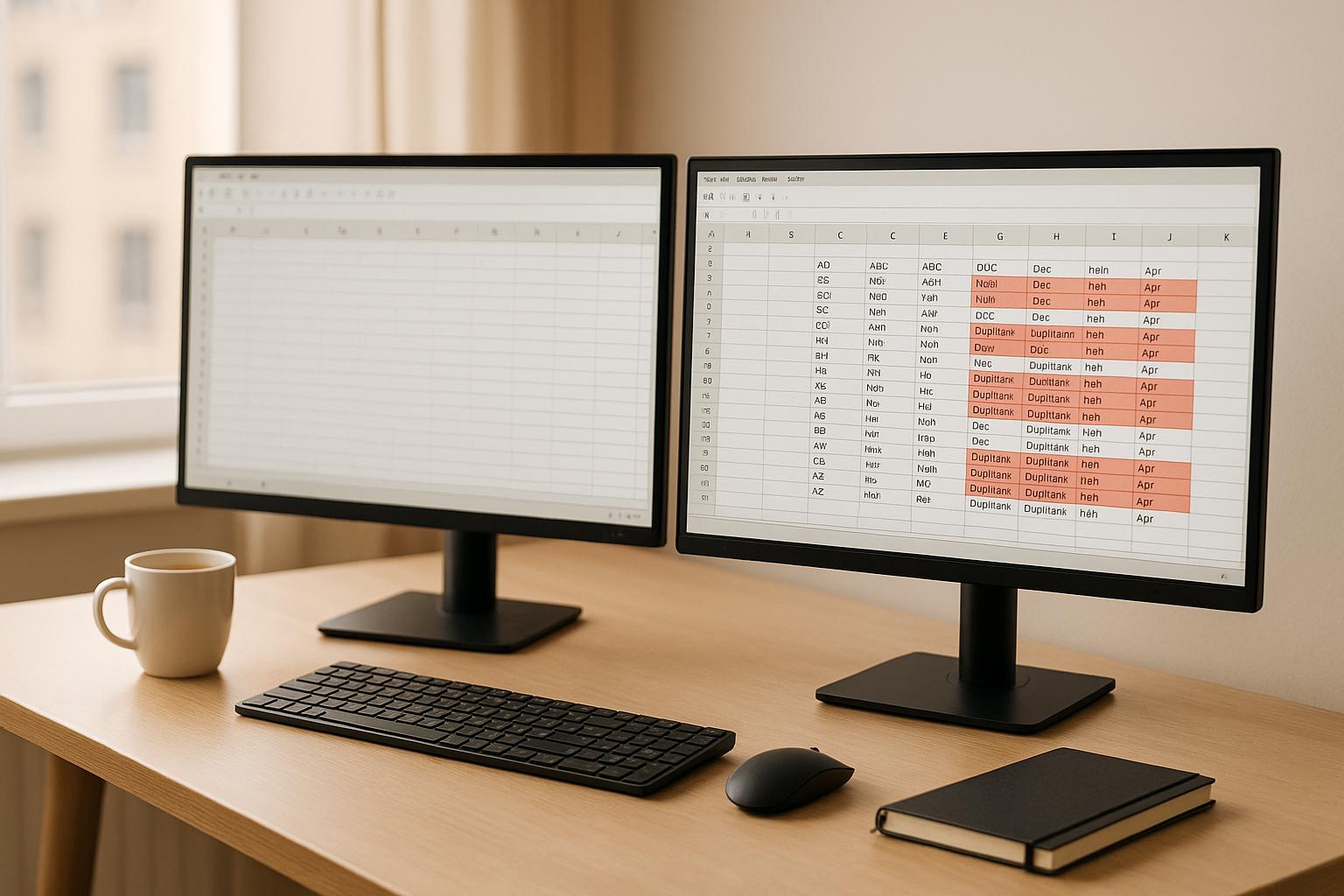Choosing a data analytics platform is all about aligning it with your business needs. Here’s a quick guide to help you decide:
- Set Clear Goals: Define what you want to achieve, like improving customer insights or streamlining operations.
- Understand Your Data: Consider the volume, variety, speed, and security requirements of your data.
- Check Compatibility: Ensure the platform integrates smoothly with your existing tools like CRM or marketing systems.
- Evaluate Features: Look for scalability, ease of use, cost options, and advanced tools like AI, real-time analytics, and predictive modeling.
- Compare Platforms: Use free trials or demos to test options like Google BigQuery, Tableau, or Power BI.
Quick Comparison
| Feature | Google BigQuery | Tableau | Power BI |
|---|---|---|---|
| Best For | Real-time analysis | Complex visualizations | Microsoft ecosystem |
| Pricing Model | Pay-as-you-go | Subscription-based | Tiered subscription |
| Scalability | Highly scalable | Great for large datasets | Good for growing teams |
| Integration | Google Cloud tools | Multiple data sources | Microsoft tools |
| Learning Curve | Moderate | Steep | Moderate |
| Advanced Analytics | Built-in ML | Advanced visualizations | AI-powered insights |
Start by analyzing your current setup, future needs, and budget. Test platforms using free trials, and focus on those that meet your goals while ensuring strong security and user support.
Related video from YouTube
Assessing Your Business Needs
Many companies spend too much on analytics tools because they don't properly evaluate what they need.
Set Clear Goals for Your Analytics
Know exactly what you want to achieve with your analytics. According to Microsoft Azure Synapse Analytics, companies that set specific analytics goals see 35% higher ROI. Whether you're looking to understand your customers better, make your marketing more effective, or improve how your business runs - be specific.
Here's what makes a good goal: Instead of saying "we need better email marketing", try "we want to boost email click rates by 20% in the next six months." This helps you pick tools that actually match what you're trying to do.
"Choice of data analytics platform should be driven by the current and future use cases for data within the organization, particularly in light of the recent advances in deep learning and AI." - Colleen Tartow, Field CTO at VAST Data
Understand Your Data Requirements
Think about your data like ingredients in a recipe - you need to know what you're working with. Here's what matters:
| Data Aspect | What to Consider |
|---|---|
| Volume | How much data do you create daily? What storage do you need? |
| Variety | What kinds of data do you handle? Numbers, text, images? |
| Speed | Do you need instant analysis or can it wait? |
| Security | What rules must you follow? How will you protect the data? |
Check Compatibility with Current Tools
"Consider the onboarding process, available educational materials, and ongoing vendor support." - Piotr Korzeniowski, COO of Piwik PRO
Your new analytics platform should work smoothly with what you already use - your CRM, marketing tools, cloud storage, and reporting systems. When tools don't play nice together, you end up with scattered data and higher costs. Think about it: If your CRM can't talk to your analytics platform, you'll waste time copying data back and forth.
Pick a platform that fits how you work now but can also grow with your business. It's like buying clothes for a growing kid - you want room to grow, but not so much that it doesn't fit today.
Features to Look for in a Data Analytics Platform
Scalability for Growing Data Needs
Your analytics platform needs to keep up as your data expands. Take Google BigQuery - it lets businesses crunch through petabytes of data without worrying about servers or infrastructure. You just pay for what you use, when you use it.
The key is finding a platform that grows with you while staying easy to use, no matter how much data you throw at it.
Ease of Use for All Team Members
These days, everyone from marketers to data scientists needs access to analytics. The best platforms offer both simple tools for beginners and advanced features for power users.
"When choosing the right analytics platform, consider ease of implementation and level of integration with the rest of the tech stack, and both should not generate unnecessary costs or consume too many resources." - Piotr Korzeniowski, COO of Piwik PRO
Pricing Options and Cost Management
Here's what you'll typically find when shopping for analytics platforms:
| Pricing Model | Best For | What to Know |
|---|---|---|
| Subscription-based | Regular data users | Set cost you can budget for |
| Pay-per-use | Fluctuating needs | Only pay when you analyze |
| Custom Enterprise | Big companies | Flexible terms to match your needs |
For example, Google Analytics has a free version for basic needs. Need more muscle? Tableau starts at $70 per user each month for their professional package.
Advanced Tools: Real-Time, Predictive Analytics, and Reporting
Modern analytics platforms pack some serious power. Here's what matters:
| Feature | Why It Matters |
|---|---|
| Real-time Analytics | Make quick calls based on live data |
| Predictive Modeling | See what's coming next |
| Custom Dashboards | Get the exact view each team needs |
| AI Integration | Let machines spot patterns and catch mistakes |
Want a real example? Tableau's prediction tools nail sales forecasts with 95% accuracy - perfect for planning inventory and staff schedules. Plus, real-time data means you can spot and fix issues right away, not next week.
sbb-itb-5174ba0
Comparing Top Data Analytics Platforms
Looking to pick the right analytics platform? Let's break down Google Analytics, Tableau, and Power BI - three tools that businesses keep coming back to. Each one shines in its own way, whether you're a small startup or a large enterprise.
Here's how these platforms stack up against each other:
| Feature | Google BigQuery | Tableau | Power BI |
|---|---|---|---|
| Best For | Real-time data analysis | Complex visualizations | Microsoft ecosystem |
| Pricing Model | Pay-as-you-go | Subscription-based | Tiered subscription |
| Scalability | Serverless, highly scalable | Excellent for large datasets | Good for growing teams |
| Integration | Google Cloud ecosystem | Multiple data sources | Microsoft tools |
| Learning Curve | Moderate | Steep | Moderate |
| Advanced Analytics | Built-in ML capabilities | Advanced visualization tools | AI-powered insights |
Google Analytics: Web Traffic and Insights

Google Analytics is your go-to tool for tracking website performance. It's like having a 24/7 digital marketing assistant - showing you exactly how users interact with your site in real time. Plus, if you're already using other Google tools, it fits right in. The platform's machine learning helps spot patterns you might miss, turning raw data into practical marketing decisions.
Tableau: Data Visualization for Complex Needs

Think of Tableau as the Swiss Army knife of data visualization. Yes, it takes time to master, but it's worth it for businesses dealing with big data sets. Need to pull data from different sources? No problem. Tableau plays nice with various data sources and cloud services, making it a solid choice for bigger companies with complex analysis needs.
Power BI: Cost-Effective Analysis for Small Businesses

Power BI is Microsoft's answer to data analysis, and it hits the sweet spot for many small and mid-sized businesses. If you're already using Microsoft 365, you'll feel right at home. The best part? You can start with the free version and upgrade as you grow. Even if you're not a tech wizard, you'll find Power BI's interface easy to navigate - perfect for getting your whole team on board with data analysis.
The key is picking the platform that matches your specific needs. Each tool has its strong points, and the right choice depends on your business size, technical expertise, and what you want to achieve with your data.
Steps to Make the Right Choice
Want to pick the perfect data analytics platform? Here's how to make a smart choice that works for your business.
Try Free Trials or Demos
Most platforms offer 14-30 day free trials. Make the most of this time by running a proof of concept (POC) - a small test using your actual business data. This hands-on experience helps you see if the platform truly fits your needs.
Focus your testing on what matters most to your business. Here's what to check during your POC:
| Test Area | What to Look For |
|---|---|
| Data Integration | How well does it connect with your systems? |
| Performance | Can it handle your data load smoothly? |
| User Interface | How easily can your team use it? |
| Report Creation | How quick is it to build key reports? |
| Mobile Access | Does it work well across devices? |
Look at Case Studies and Reviews
Check out what other companies in your field are doing. Their experiences can point you in the right direction. For instance, VAST Data found that companies planning to use AI needed platforms with specific deep learning features.
Get Advice from Experts
Talk to people who know their stuff - both tech experts and business pros can offer useful tips.
"When choosing the right analytics platform, consider ease of implementation and level of integration with the rest of the tech stack, and both should not generate unnecessary costs or consume too many resources." - Piotr Korzeniowski, COO of Piwik PRO.
Pay attention to what kind of support each vendor offers. Look at their:
- Onboarding process
- Tech support quality
- User community strength
Keep notes during your trial period about what works and what doesn't. These insights will help you pick a platform that matches your business needs.
Conclusion: Choosing the Best Platform for Your Business
Picking the right data analytics platform isn't just about what you need today - it's about what your business will need tomorrow. Modern companies need platforms that can handle both batch processing and real-time analysis, and there's no one-size-fits-all solution.
When choosing a platform, focus on what matters most for your specific situation. Cloud platforms have become popular because they're often cheaper and more flexible than traditional options. Plus, they make it easier to scale up or down as your needs change.
Here's what to keep in mind when making your decision:
| Factor | Why It Matters |
|---|---|
| Scalability | Your platform should grow alongside your data needs |
| Integration | Easy connection with existing tools saves time and money |
| Security | Strong data protection keeps your information safe |
| Cost Structure | Clear pricing helps you plan your budget |
Ready to move forward? Start by taking a good look at your current setup and where you want to be in the next few years. Make security a top priority - look for platforms with solid encryption and user controls. And don't forget about training - even the best platform won't help if your team doesn't know how to use it properly.
Remember that the right choice depends on your specific needs. Take time to evaluate each option carefully, and think about how it fits with your company's goals and resources.
FAQs
Not sure which data analytics platform to pick? Let's tackle the most common questions to help you decide.
How do I choose a data analytics tool?
Picking the right data analytics platform boils down to four key factors: your data needs, tech setup, security, and budget.
First, think about your data. How much do you handle now? How much will you need to process in the future? If you're running machine learning models on big datasets, you'll need some serious processing power and room to grow.
Your new platform should play nice with your current tech stack. Look for tools that your team can actually use - ones with good training materials and quick support when you need help.
Security is non-negotiable. Make sure your choice includes:
- Strong data encryption
- Solid access controls
- The right certifications (GDPR for European companies, HIPAA for healthcare)
Finally, crunch the numbers. Beyond the sticker price, factor in:
- Setup costs
- License fees
- Regular maintenance
- Future expansion costs
Pro tip: Watch out for hidden fees. The best platforms are upfront about what you'll pay now and later.


